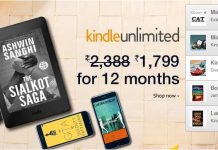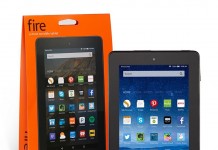 Here is an article from the University of Georgia Office of Public Affairs News Service about a six-month study in Athens, Georgia on using the Kindle DX as a replacement delivery method for newspapers.
Here is an article from the University of Georgia Office of Public Affairs News Service about a six-month study in Athens, Georgia on using the Kindle DX as a replacement delivery method for newspapers.
The study found that, while participants did like the readability of the Kindle’s screen, most did not feel it made a good overall replacement for a newspaper.
For younger adults, the Kindle fell short when compared to their beloved smart phones, with touch screens and multiple applications—from music to surfing the Internet—available in a single small package. The e-reader felt “old” to them.
Older adults were overall more receptive to the concept of an e-reader. However, the Kindle failed to include aspects of the traditional newspaper they had grown fond of, such as comics and crossword puzzles.
Participants also felt that the DX’s price tag of $489 was too much to pay for reading a newspaper. The study did focus solely on using the Kindle as a newspaper replacement, however, rather than for books and other media as well.
I found it interesting how the attitude of the younger adults in the study mirrored what Andrew Savikas said in the Tools of Change article we discussed yesterday:
Attributes like convenience, portability, price, immediacy, and connectivity are more important to these customers than attributes like paper weight, coating, or smell. So it’s no surprise that we’re seeing the quickest growth in smartphone reading outside of established markets.
Perhaps there’s something to this “disruptive innovation” thing after all?
































Sounds like a content problem to me, as much as a hardware problem. If, for instance, you could get ALL of the newspaper content on the Kindle, it sounds like older users would be more into it. And additional apps and options would bring in the younger users… though they obviously want a more capable device, like a tablet or netbook.
But then, there’s nothing surprising in these findings… in fact, they’re pretty common sense, aren’t they?
A big problem with the ereaders is that they are a retrofuturistic version, ie something a lot of persons though would be really cool before almost all shortform text went digital on the internet. It kind of like with the videophonebooth it’s something that became technologically posible after the world moved to something with a lot broader scope.
The content industry is stuck in a dilemma here, if you go hollywood bluckbuster with byg hyped up productions a lot of the smaller publishers will have to let go or merge, and theres not an awfull lot of money to be made for the individial publishers in the long tail because it’s well really long. That leads them to kind of hope that the internet way of accessing text is really just a fad.
You got something like the apple adstore(that will be minor player in 5years) completely overhyped because it locks the long tail out of the loop and puts the mid sized works back into the game. A lot of the hype is because a big part of the content industry wants that to be the norm instead of the current long tail model of the internet.
I have been quite content with the Chicago Tribune on my Kindle since approximately August of 2008. I let the print and Kindle editions overlap for about a month until I was sure. All I want from a newspaper is news, commentary and editorials. I do not need crossword puzzles or comics so it works for me. I am so much less a fan of constant video as many seem to be—would rather read a print story than have a talking head tell me about it. Am I an aberration?